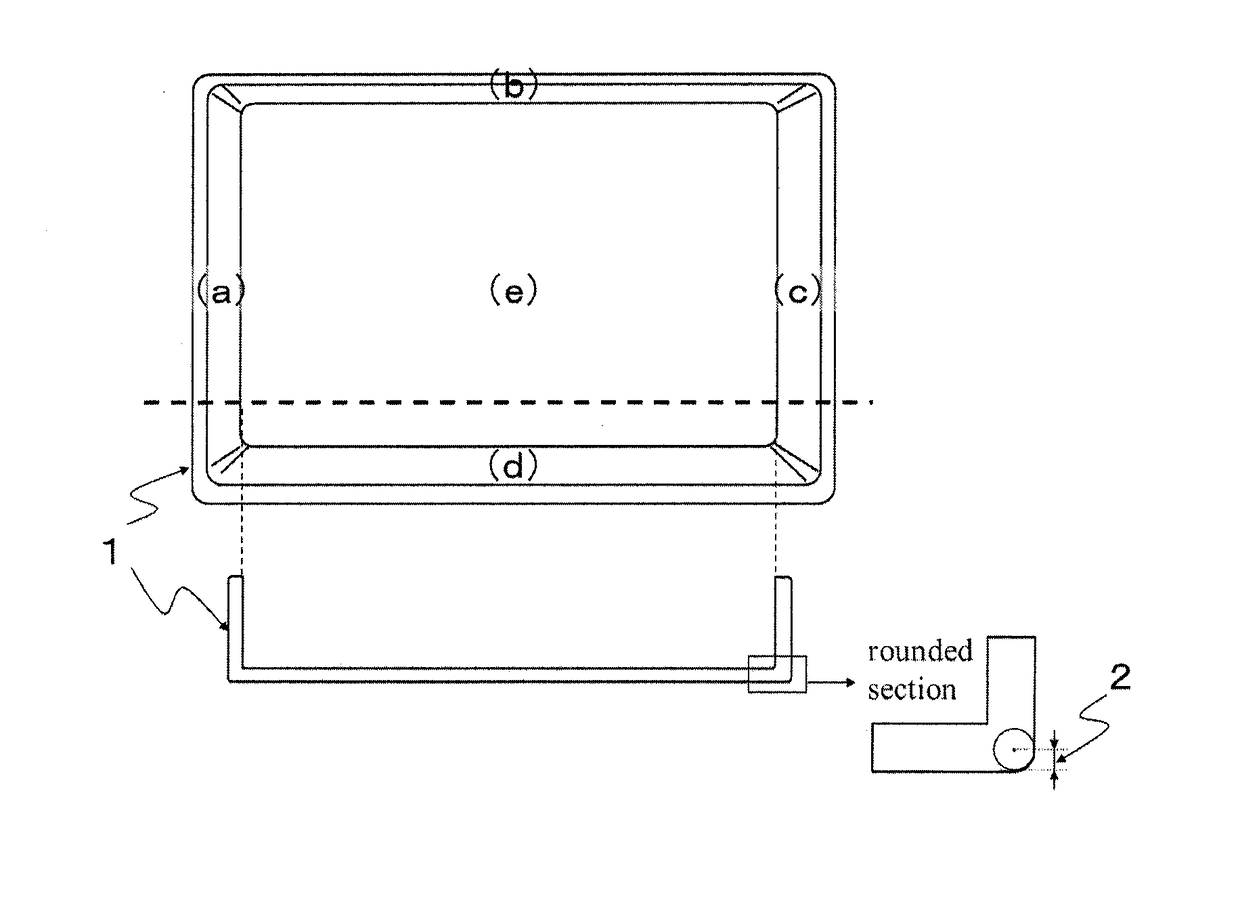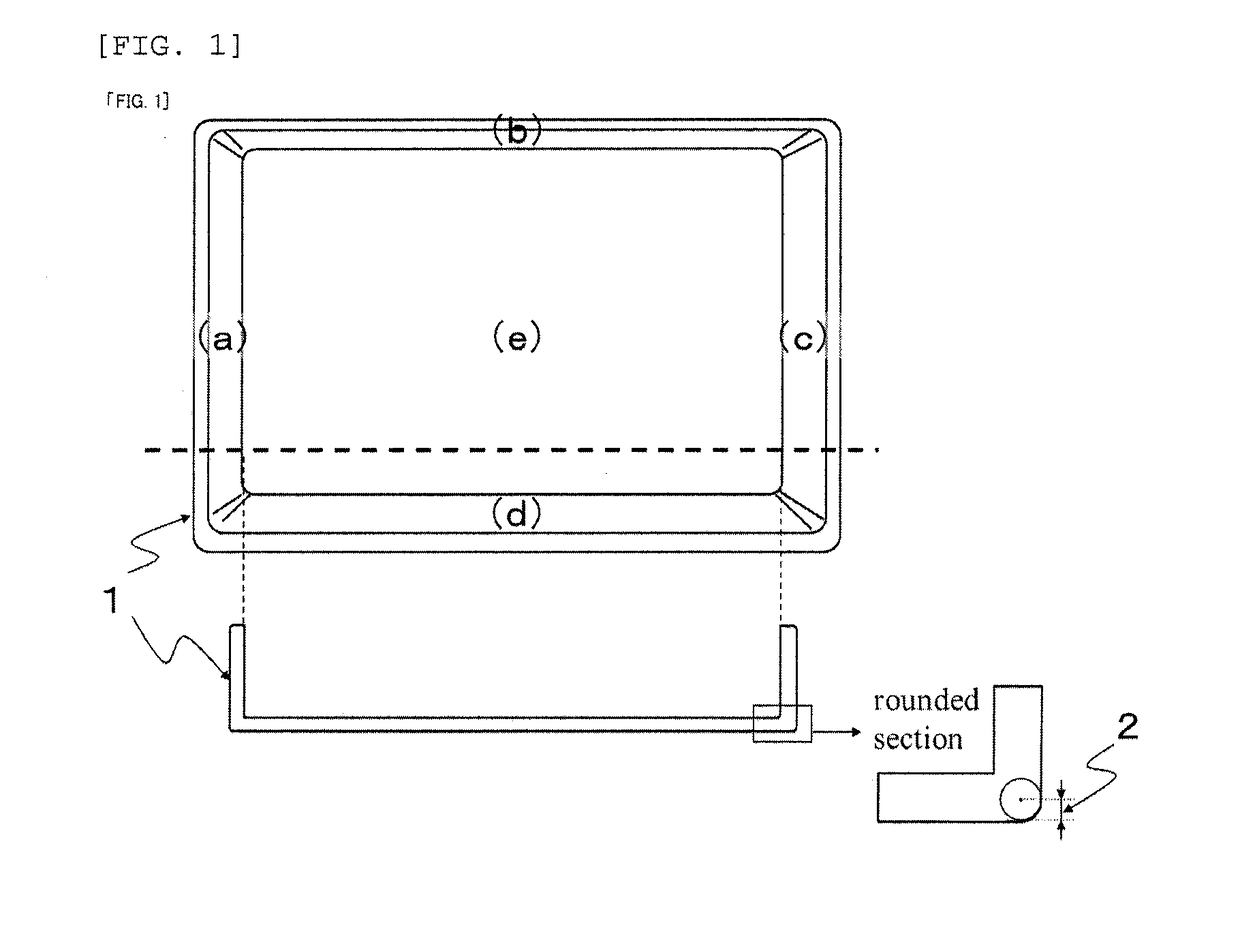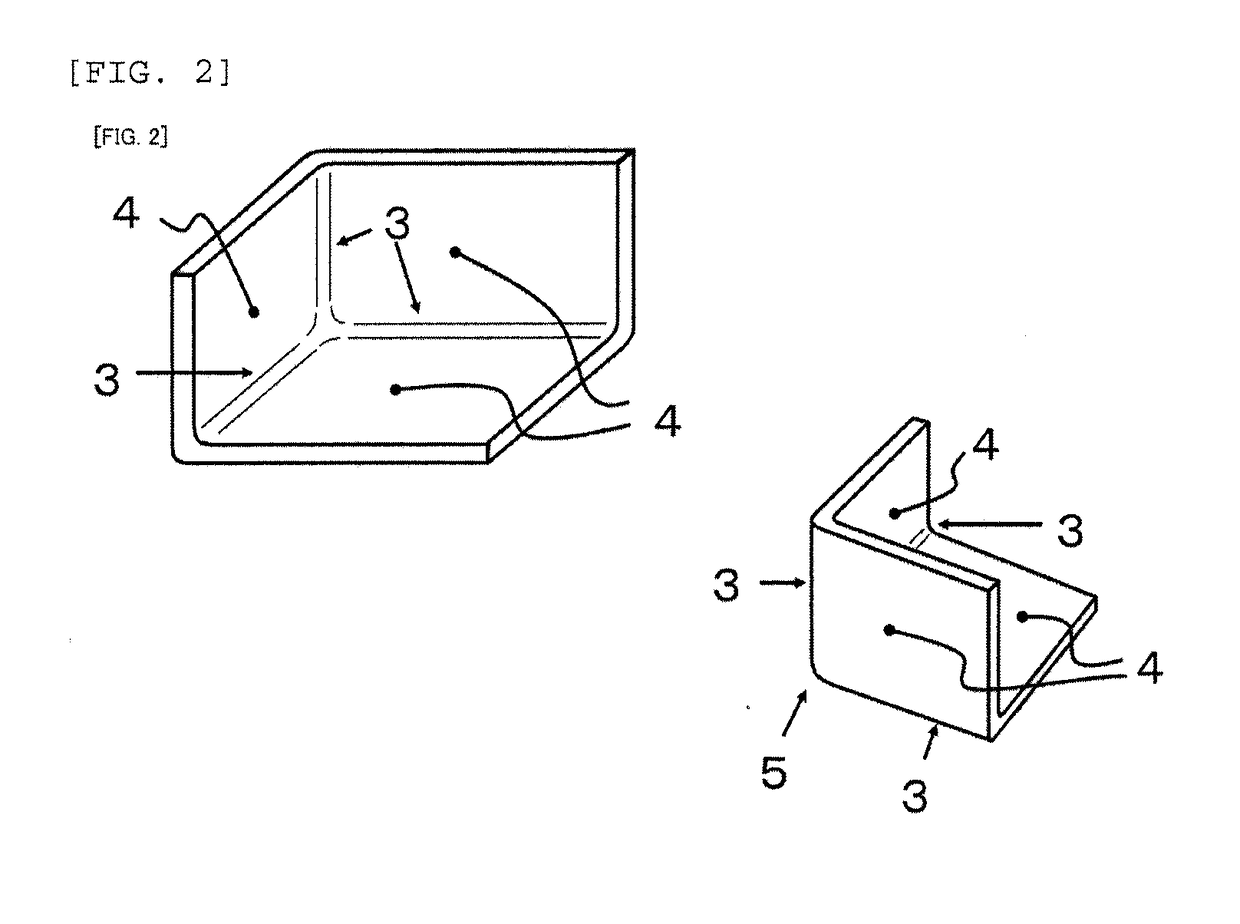Method for manufacturing fiber-reinforced composite material
a composite material and fiber reinforcement technology, applied in the direction of synthetic resin layered products, layered products, chemistry apparatus and processes, etc., can solve problems such as the improvement of the production cycle, and achieve the effect of poor appearance and high quality appearan
- Summary
- Abstract
- Description
- Claims
- Application Information
AI Technical Summary
Benefits of technology
Problems solved by technology
Method used
Image
Examples
reference example 1
[0137]The starting material for the substrate layer (II) was prepared by dry-blending 85 parts by mass of a crystalline PP (the polypropylene is hereinafter abbreviated as PP) (TF850H manufactured by Prime Polymer Co., Ltd. having a MFR of 2.9 g / 10 minutes and an isotactic index of 96%) and 15 parts by mass of master raw material (2480K manufactured by Sankyo Seifun Co. Ltd.; calcium carbonate particles, 6 μm) obtained by compounding 80% by mass of calcium carbonate and 20% by mass of polypropylene. This starting material for the substrate layer (II) was fed to a single screw melt extruder for the substrate layer (II). In the meanwhile, crystalline PP (TF850H manufactured by Prime Polymer having a MFR of 2.9 g / 10 minutes and an isotactic index of 96%) which was the starting material for the surface layer (I) was fed to a single screw melt extruder for the surface layer (I). Melt extrusion was conducted at 240° C. After removing foreign objects by a 60 μm cutoff sintered filter, the ...
reference example 2
[0138]The starting material for the substrate layer (II) was prepared by dry-blending 93.3 parts by mass of a crystalline PP (TF850H manufactured by Prime Polymer Co., Ltd. having a MFR of 2.9 g / 10 minutes and an isotactic index of 96%) and 6.7 parts by mass of master material (2480K manufactured by Sankyo Seifun Co. Ltd.; calcium carbonate particles, 6 μm) obtained by compounding 80% by mass of calcium carbonate and 20% by mass of polypropylene. This starting material for the substrate layer (II) was fed to a single screw melt extruder for the substrate layer (II). In the meanwhile, crystalline PP (TF850H manufactured by Prime Polymer having a MFR of 2.9 g / 10 minutes and an isotactic index of 96%) which was the starting material for the surface layer (I) was fed to a single screw melt extruder for the surface layer (I). Melt extrusion was conducted at 240° C. After removing foreign objects by a 60 μm cutoff sintered filter, the materials were laminated in the thickness ratio of 8 / 1...
reference example 3
[0139]Polyvinyl fluoride resin film “Tedlar” (Registered Trademark) TTR20SG4 was used as a commercially available film. The film had a thickness of 50 μm and an arithmetic mean roughness of 100 nm. The film was transparent with no recognizable fillers.
PUM
| Property | Measurement | Unit |
|---|---|---|
| temperature | aaaaa | aaaaa |
| temperature | aaaaa | aaaaa |
| surface free energy | aaaaa | aaaaa |
Abstract
Description
Claims
Application Information
 Login to View More
Login to View More - R&D
- Intellectual Property
- Life Sciences
- Materials
- Tech Scout
- Unparalleled Data Quality
- Higher Quality Content
- 60% Fewer Hallucinations
Browse by: Latest US Patents, China's latest patents, Technical Efficacy Thesaurus, Application Domain, Technology Topic, Popular Technical Reports.
© 2025 PatSnap. All rights reserved.Legal|Privacy policy|Modern Slavery Act Transparency Statement|Sitemap|About US| Contact US: help@patsnap.com



